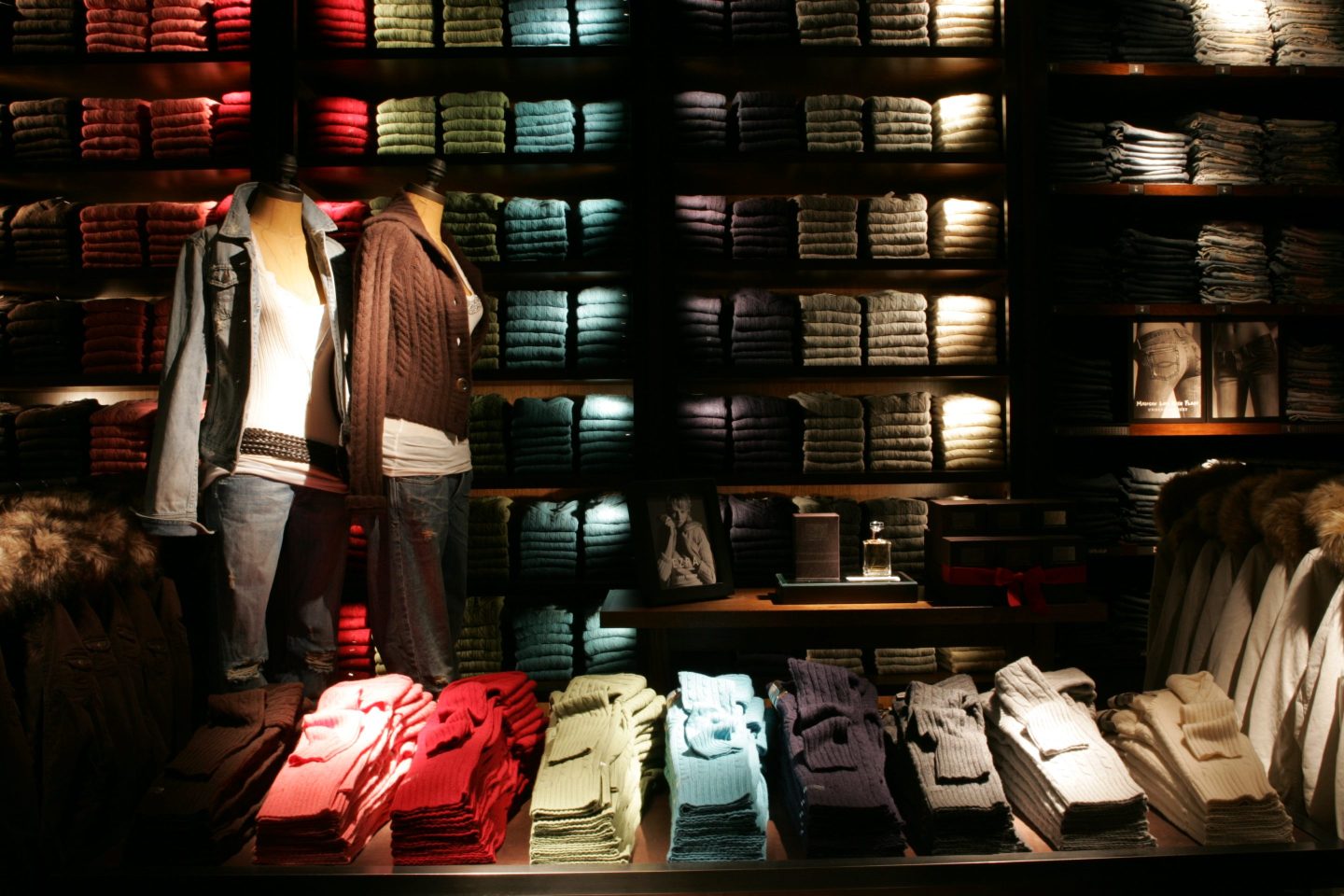Millennials: You’ll remember walking into Abercrombie & Fitch in the late ‘90s and early 2000s. Loud, thumping music, perfume so strong you could barely think straight, and posters of half-naked men were all part of the experience—and a desire to feel “cool.”

David Turner/WWD/Penske Media—Getty Images
Mike Jeffries, Abercrombie’s former CEO, was behind that vision. And on Tuesday, he and his partner Matthew Smith were arrested in Florida in connection with sex trafficking-related charges, according to a federal indictment. The duo, along with an employee of theirs, James Jacobson, allegedly ran an international sex trafficking and prostitution ring from 2008 to 2015 that allegedly involved paying for secret sex with potentially dozens of men, including 15 unnamed victims.
The official indictment has been a long time coming. Last year, BBC released a documentary about Jeffries’ shady practices. The BBC investigation revealed that Jeffries and Smith allegedly used a middleman to find men to attend and participate in the sex events. Jeffries and Smith would allegedly engage in sexual activity with about four men at these events or “direct” them to have sex with one another, several attendees from the events told BBC. Jeffries’ personal staff dressed in Abercrombie uniforms and supervised the activity, according to the allegations, and staff members gave attendees envelopes filled with thousands of dollars in cash at the end of the events.

LAURENT FIEVET/AFP/GettyImages
The middleman “made it clear that unless I let him perform oral sex on me, I would not be meeting with Abercrombie & Fitch or Mike Jeffries,” David Bradberry, who was introduced to Jacobson in 2010 when he was 23 years old, told BBC. An agent posing as a model recruiter introduced Bradberry to Jacobson, who described himself as the gatekeeper to the “owners” of Abercrombie and Fitch, according to the BBC investigation.
The federal indictment included related allegations and more.
Jeffries’ shady past with Abercrombie
According to a 2006 interview with Salon, Jeffries wanted to make the 130-year-old retailer into the hearthrob teen clothing brand of the time, which he successfully did—but not without offending swaths of people. His interview pretty much sums up his marketing approach as only making it about “cool” people.
“Those companies that are in trouble are trying to target everybody: young, old, fat, skinny. But then you become totally vanilla,” Jeffries told Salon. “You don’t alienate anybody, but you don’t excite anybody, either.”

Brooks Canaday/MediaNews Group/Boston Herald via Getty Images
By 2006, Abercrombie & Fitch’s earnings had risen for 52 straight quarters, with annual profits of more than $2 billion. Plus, the company had opened hundreds of new brick-and-mortar stores and launched three new labels, including Hollister.
“But the marketing approach that made A&F into a financial success also made it an HR and PR nightmare,” according to NPR. Abercrombie’s approach to marketing ignited a response from women through mock ads and a boycott call from the American Decency Association. Black, Latino, and Asian American employees in 2004 filed a class-action lawsuit against the company alleging minority applicants were discouraged from applying.
In the early 2010s, Abercrombie started going south financially as a result of age discrimination and hiring practice lawsuits, and Jeffries’ 2006 interview with Salon started being circulated again and went viral. In 2013, Jeffries was named as the worst CEO of the year by TheStreet’s Herb Greenberg. To boot, CNBC’s Jim Cramer named him to his “Wall of Shame.”
“Since its early trading in 1996, Abercrombie has barely beaten the S&P 500. It has dramatically trailed the index over the past one-, three- and five-year marks,” Greenberg wrote in 2013. “The past year, in particular, has been an abomination, leading activist firm Engaged Capital to demand his ouster.”
By 2014, same-store sales slumped for 11 straight quarters and two of its subsidiary brands, Ruehl No.925 and Gilly Hicks, shut down just a few years after launch. Teens were just also over Abercrombie’s style at that point, and the shopping mall era was coming to a close. And in 2016, Abercrombie was deemed the most-hated retailer by the American Customer Satisfaction Index for its hypersexualized marketing and controversies.
Abercrombie’s second wind
But as Abercrombie has distanced itself from Jeffries, the brand is making a major comeback after posting its best first-quarter earnings in company history this year. Abercrombie reported $1 billion in net sales, a 22% increase from 2023. Last year, its annual revenues were $5 billion.

YUKI IWAMURA/AFP—Getty Images
This was an epic comeback for the brand. CEO Fran Horowitz took the helm in 2017, revamping stores and inventories as well as expanding sizes and introducing clothing for a variety of lifestyles.
“We moved from a place of fitting in to creating a place of belonging,” Horowitz said in a 2022 speech at the Fordham University Gabelli School of Business’ fifth annual American Innovation Conference.

